On a scale of 1-10, the importance of well-crafted Inbound and Outbound Call Center Scripts stands at 11. This might sound a little overblown but it is important to understand the importance of scripts in customer support.
These scripts serve as the backbone of effective communication, ensuring consistency, professionalism, and a streamlined customer experience.
Whether engaging customers seeking assistance or proactively reaching out to them, a strategic, premeditated script empowers agents to deliver exceptional service.
This blog delves into the intricate details of creating impactful scripts, providing templates and case studies for both inbound and outbound scenarios.
Explore the nuances of script development with insights that enhance customer satisfaction and contribute to the success of call center software operations.
Importance of Inbound & Outbound Call Center Scripts
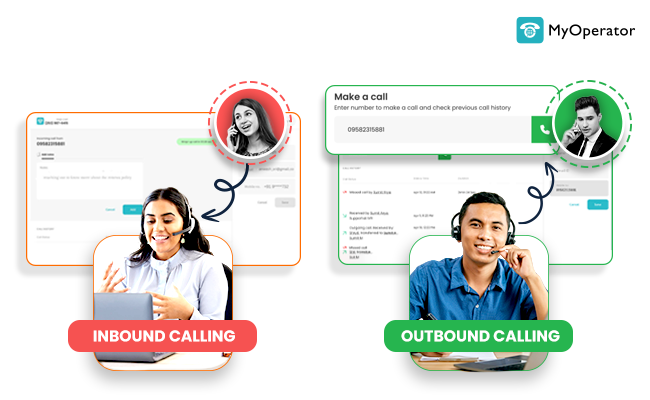
1. Consistency and Professionalism
Inbound and Outbound Call Center Scripts serve as the guardians of consistency and professionalism in customer communication.
They ensure that every interaction, whether initiated by the customer or the business, adheres to a predetermined standard. This consistency is the foundation upon which customer trust is built.
2. Efficiency in Query Handling
For inbound scenarios, having a well-structured script is akin to providing a roadmap for handling customer queries.
It enables agents to navigate through diverse questions efficiently, offering prompt and accurate responses. This not only enhances customer satisfaction but also streamlines the overall support process.
3. Proactive Engagement in Outbound Scenarios
In the realm of outbound calls, scripts empower agents to proactively engage with customers. These carefully crafted dialogues serve as a guide, ensuring that agents communicate key messages effectively. Whether introducing new products or services or conducting surveys, scripts provide a foundation for compelling and coherent conversations.
4. Enhancing Training and Onboarding
Scripts become invaluable assets during agent training and onboarding processes. They serve as practical tools for introducing new team members to the company’s communication standards, product details, and customer handling protocols. This ensures a seamless integration of new agents into the operational workflow.
Brands can even partner with training video companies to create training material for their employees and completely streamline the learning process.
5. Adaptability and Improvement
The iterative nature of scripts allows businesses to adapt to evolving customer needs and feedback. Regular updates to scripts based on customer interactions and market trends contribute to an agile and responsive customer service approach.
6. Mitigating Compliance Risks
In industries where compliance is paramount, such as finance and healthcare, well-crafted scripts act as a safeguard. They ensure that agents adhere to legal and ethical guidelines, reducing the risk of compliance-related issues.
In essence, the importance of Inbound and Outbound Call Center services Scripts extends beyond regular conversation guidelines.
They are strategic tools that fortify customer relations, drive operational efficiency, and position businesses for success in a competitive marketplace.
How Businesses Benefit From Call Center Scripts?
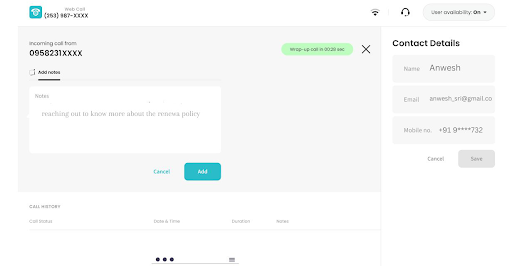
Businesses derive several tangible benefits from implementing well-crafted call center scripts, enhancing customer interactions and overall operational efficiency. Here’s a breakdown of how businesses reap the rewards:
Consistency and Professionalism
Think of it like creating a trustworthy character for your business. Consistent and professional interactions build a reliable image in the eyes of customers.
Example (Retail): When a retail company ensures that every customer inquiry, whether about products or returns, is handled with the same professional tone, it builds trust. This consistency tells customers that they can rely on the company for consistent service.
Efficiency in Query Handling
It’s like having a well-organized toolbox. Scripts provide a step-by-step guide for agents to efficiently handle various customer questions, making the process smoother and quicker.
Example (Travel): Imagine calling an airline. Scripts help agents swiftly navigate common questions about flight schedules or booking changes. This systematic approach ensures that your questions are answered promptly, contributing to a smoother experience in the fast-paced travel industry.
Proactive Customer Engagement
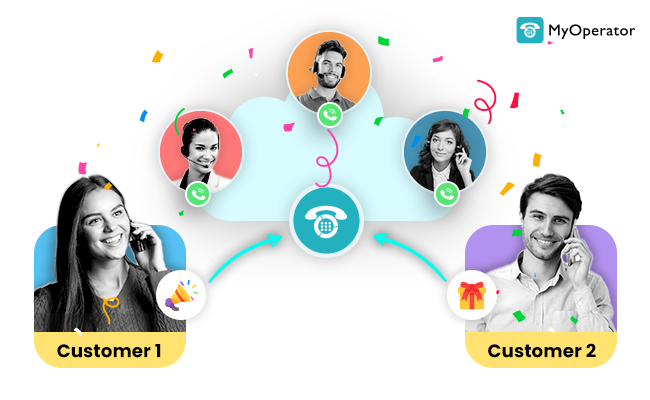
Think of it as reaching out to a friend before they ask for a favor. Proactive engagement builds a connection and encourages loyalty.
Example (Marketing): Picture a subscription service provider using outbound scripts to tell you about upcoming features or subscription renewals before you ask. This engagement not only keeps you informed but also makes you feel valued, fostering loyalty in the competitive marketing sector.
Enhancing Training and Onboarding
It’s like having a detailed map for new employees. Scripts provide a structured training tool, helping new agents quickly understand how to communicate and what protocols to follow.
Example (Financial): In a financial institution, scripts during onboarding help new agents grasp communication standards and compliance protocols. It’s like giving them a guidebook to navigate the complexities of the financial sector.
Adaptability and Improvement
Think of it like updating your recipe based on feedback. Regularly updating scripts ensures that your customer interactions stay relevant and aligned with changing needs.
Example (E-commerce): In the dynamic world of e-commerce, scripts are like recipe cards. They are updated regularly to align with new product offerings and changing customer preferences, ensuring that agents always have the latest information.
Mitigating Compliance Risks
It’s like having guardrails to stay on the legal and ethical path. Scripts guide agents, ensuring they communicate within legal and ethical boundaries, reducing the risk of compliance issues.
Example (Healthcare): In healthcare, scripts guide discussions about sensitive patient information, ensuring that agents follow legal and ethical guidelines. It’s like having guardrails to navigate the regulatory landscape.
Increased Customer Satisfaction
Think of it as solving a problem before it becomes a frustration. Scripts address common issues promptly, leading to higher customer satisfaction.
Example (Technology): In the tech world, scripts are like troubleshooters. They comprehensively address common technical issues, ensuring faster problem resolution and increased customer satisfaction.
Time and Cost Efficiency
It’s like having a well-organized assembly line. Scripts streamline inbound calls, reducing the time it takes to handle each call and contributing to cost efficiency.
Example (Utility): Picture a utility company using scripts for common billing inquiries. This streamlines the process, reducing call duration and allowing agents to assist more customers within a given timeframe, contributing to overall cost efficiency.
Data-Driven Insights
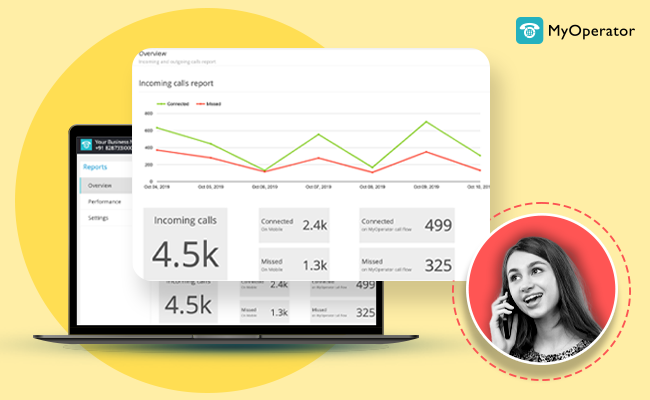
It’s like having a structured survey to gather meaningful feedback. Outbound scripts guide agents and provide structured responses, ensuring the reliability of data for strategic decision-making.
Example (Market Research): In market research, scripts are like survey blueprints. They guide agents during outbound surveys, collecting specific and standardized responses. This structured approach ensures the data collected is reliable and can be used for strategic decision-making in the competitive market research sector.
Inbound & Outbound Call Center Scripts With Templates
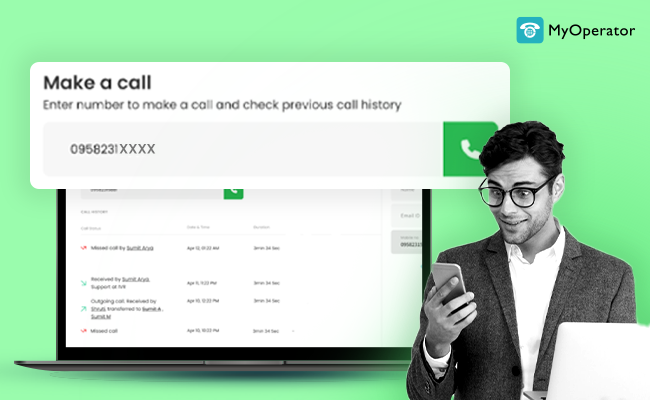
Inbound and outbound call center scripts are predefined sets of dialogues and responses that agents follow during customer interactions over the phone.
These scripts help guide the conversation, ensuring that agents provide consistent information, adhere to company policies, and deliver a positive customer experience.
Inbound Call Center Script:
Purpose: Inbound scripts are used when customers initiate contact with the call center, such as when they have inquiries, issues, or need assistance.
1. Greeting:
This is the first impression and sets the tone for the interaction. Ensure a friendly and professional greeting.
Example: “Thank you for calling [Your Company Name], this is [Agent Name]. How may I assist you today?”
2. Identification:
Collecting necessary information to identify the customer ensures a personalized and efficient resolution.
Example: “May I have your name and customer ID, please?”
3. Understanding the Issue:
Use open-ended questions to allow the customer to explain their situation or problem thoroughly.
Example: “Could you please provide more details about the issue you’re experiencing?”
4. Providing Assistance:
Express empathy and assure the customer that their concern is important. Offer solutions or information.
Example: “I’m sorry to hear that you’re facing this issue. Let me see how I can help.”
5. Resolution:
Propose a solution based on the information gathered. If the issue requires specialized attention, offer to transfer the call.
Example: “I recommend [solution]. If that doesn’t work, I’ll connect you with our [relevant department].”
6. Closing:
Before ending the call, confirm the customer’s satisfaction and inquire about any additional assistance needed.
Example: “Is there anything else I can help you with today?”
Here’s a Look At Example Scenarios (Inbound Calling)

Scenario 1: Customer calls with a billing issue.
- Agent: “Thank you for calling [Your Company Name], this is [Agent Name]. May I have your name and customer ID, please?”
- Customer: “My name is [Customer Name], and my ID is [Customer ID].”
- Agent: “Thank you, [Customer Name]. Could you please provide more details about the billing issue you’re experiencing?”
- Customer: Explains the billing issue.
- Agent: “I’m sorry to hear that. Let me check your account. I recommend [solution]. If that doesn’t work, I’ll connect you with our billing department. Does that sound okay?”
- Customer: “Yes, please do that.”
Scenario 2: Customer calls for Technical Support
- Agent: “Thank you for calling [Your Tech Support], this is [Agent Name]. May I have your name and product serial number, please?”
- Customer: “I’m [Customer Name], and my serial number is [Serial Number].”
- Agent: “Thank you, [Customer Name]. Could you please describe the technical issue you’re facing with your product?”
- Customer: Explains the technical problem.
- Agent: “I appreciate your patience. Let me troubleshoot that for you. I recommend [solution]. If that doesn’t work, I’ll escalate it to our technical team. Is that okay?”
- Customer: “Yes, please go ahead.”
Scenario 3: Customer reaches out regarding Service Inquiry
- Agent: “Thank you for calling [Your Service Center], this is [Agent Name]. May I have your name and service reference number, please?”
- Customer: “I’m [Customer Name], and my reference number is [Reference Number].”
- Agent: “Thank you, [Customer Name]. Could you provide more details about the service inquiry you have?”
- Customer: Describes the service-related concern.
- Agent: “I apologize for the inconvenience. Let me review your case. I recommend [solution]. If needed, I’ll connect you with our service department. Does that sound good to you?”
- Customer: “Yes, please proceed.”
Outbound Call Center Script
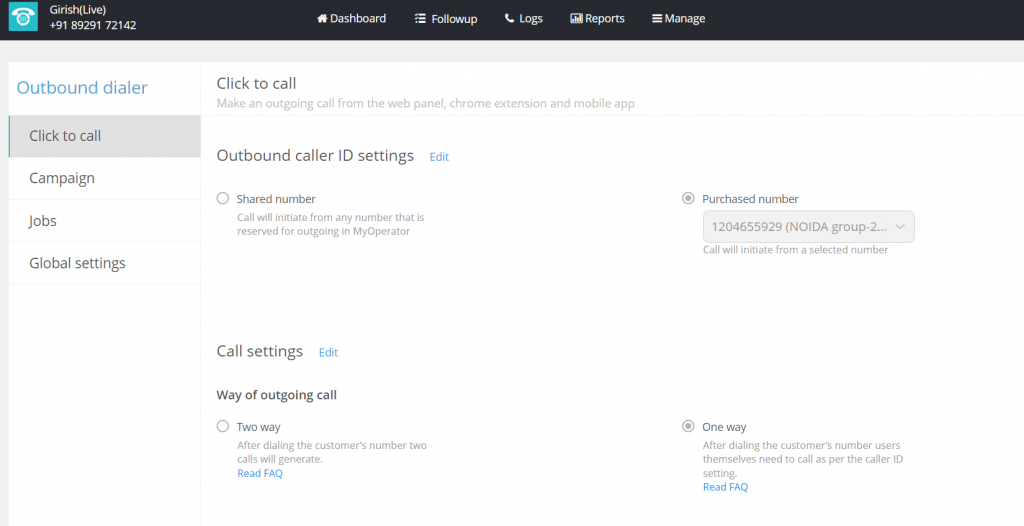
1. Introduction
Clearly state who you are, your company, and the purpose of the call to set clear expectations.
Example: “Hello, this is [Your Name] from [Your Company]. I’m calling to discuss [the reason for the call].”
2. Building Rapport
Engage the customer in a friendly conversation to establish a connection and create a more comfortable atmosphere.
Example: “Before we dive into the main topic, how has your day been so far?”
3. Presenting Information
Clearly communicate the benefits or purpose of the call, keeping the message concise and compelling.
Example: “I wanted to share some exciting updates about [product/service] that can [benefit the caller].”
4. Handling Objections
Be prepared to address concerns or objections with well-thought-out responses that highlight the value of your product or service.
Example: “I understand your concern. Let me address that by explaining how [product/service] addresses [concern].”
5. Closing
Clearly outline the next steps, whether it’s scheduling a demo, providing more information, or another call to action.
Example: “If you’re interested, we can schedule a demo or provide more information. What works best for you?”
Here’s a Look At Example Scenarios (Outbound Calling):
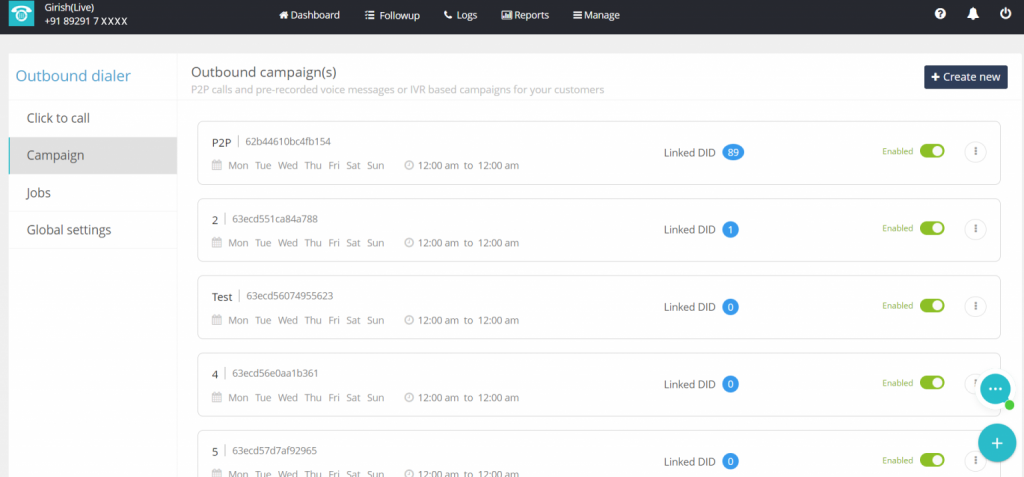
Scenario 1: Outbound Sales Call for a New Product.
- Agent: “Hello, this is [Your Name] from [Your Company]. Before we dive into the main topic, how has your day been so far?”
- Customer: Responds.
- Agent: “Great to hear! I wanted to share some exciting updates about [product/service] that can [benefit the caller]. Would you be interested in learning more?”
- Customer: Expresses interest but has concerns.
- Agent: “I understand your concern. Let me address that by explaining how [product/service] addresses [concern]. If you’re interested, we can schedule a demo or provide more information. What works best for you?”
- Customer: Agrees to a demo.
Scenario 2: Outbound Call for Customer Feedback
- Agent: “Hello, this is [Your Name] from [Your Company]. Before we discuss anything, may I inquire about your recent experience with our services?”
- Customer: Shares feedback.
- Agent: “Thank you for sharing. I wanted to inform you about improvements we’re making based on feedback. Would you be interested in learning more about our upgraded services?”
- Customer: Expresses interest but has concerns.
- Agent: “I understand your concerns. Let me address them by explaining how our upgraded services address [concerns]. If you’re interested, we can schedule a brief presentation or provide more information. What suits your schedule?”
- Customer: Agrees to a presentation.
Scenario 3: Outbound Calling for Product Renewal
- Agent: “Hello, this is [Your Name] from [Your Company]. Before we delve into the renewal process, how has your experience been with our product?”
- Customer: Shares thoughts on the product.
- Agent: “I’m glad to hear that! As your subscription is nearing renewal, I wanted to discuss the benefits of continuing with us. Would you like to explore the details?”
- Customer: Expresses interest but has concerns.
- Agent: “I appreciate your concern. Let me address that by explaining the additional benefits of renewing. If you’re interested, we can set up a call to discuss in more detail. Does that work for you?”
- Customer: Agrees to a follow-up call.
These scripts provide a structure for agents to follow but should be flexible enough to accommodate the unique needs of each customer.
Regular training and updates to scripts ensure that agents stay informed about changes in products, services, or company policies, and can adapt to evolving customer needs.
Get MyOperator’s Inbound+Outbound Call Solution for Superior Customer Support

Delight Your Customers with 24*7 Support: MyOperator goes beyond the clock, offering a customized IVR system connected to your helpline number, providing customers with 24*7 support.
For example, a customer seeking assistance with a product issue can receive immediate guidance or initiate a support ticket, ensuring their needs are addressed, day or night.
Track Inbound + Outbound Calls: With MyOperator, every call is a data point. Track all inbound and outbound calls in real-time, offering complete control over your business calls.
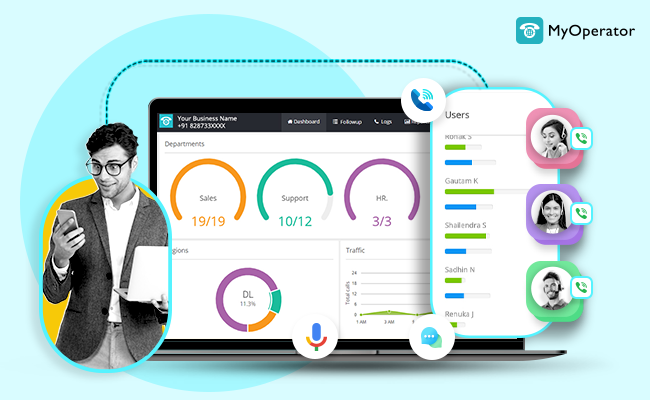
For instance, as agents handle customer inquiries, managers can monitor call volumes, identify peak hours, and allocate resources efficiently to optimize customer service.
Managing Sales & Support On-the-Go: The MyOperator mobile app becomes the command center for your on-the-go agents. Whether at home or in the field, agents can manage calls seamlessly.
For instance, a sales representative attending a client meeting can address customer inquiries promptly through the app, ensuring business operations are not constrained by location.
Measure and Improve Agents’ Performance: Unlock insights into your sales-support team’s performance by listening to call recordings. Identify quality gaps, refine training programs, and enhance pitches.
For example, a manager could identify a common objection during calls, leading to targeted training sessions to address and overcome this objection effectively.
Record All of Your Agent Calls: MyOperator securely records all business calls in the cloud, providing unique insights. Managers can conduct call audits to ensure quality assurance standards are met.
In a customer support scenario, a recorded call may reveal an innovative solution provided by an agent, which can be shared as a best practice across the team.
Smart Biz Insights with Call Reports: Leverage analytical call reports for smart business decisions. Analyze the number of calls, duration, locations, and patterns for both inbound and outbound calls.

For instance, a business noticing a spike in calls during a specific time could adjust staffing to meet demand effectively.
Never Miss a Call and Customer: MyOperator’s IVR system ensures that no customer call goes unanswered. Respond in real-time, and missed calls are added to the follow-up queue for proactive engagement.
For instance, a missed call during a busy period is not a lost customer; it’s an opportunity for a timely callback, showcasing a commitment to customer satisfaction.
Build and Manage Remote Sales-Support Teams: In the era of remote work, MyOperator facilitates the setup and management of sales and support teams across different locations. Managers can map agents on the MyOperator panel, ensuring efficient collaboration.
For example, a company expanding its operations can seamlessly onboard remote agents, maintaining a cohesive team dynamic.
Provide World-Class Sales-Support: MyOperator delivers a comprehensive suite of 30+ business call management software features.
For instance, in addition to the above, businesses can leverage features like call queuing, call forwarding, and voicemail, ensuring they provide a world-class service and support experience to their customers.
The Lenskart – MyOperator Success Story (Outbound Calling)
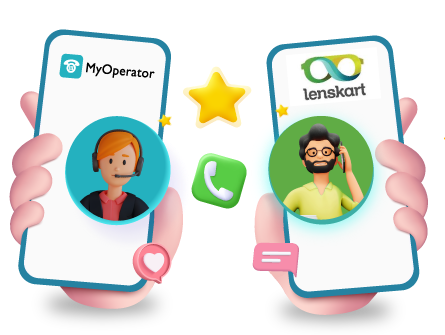
How Lenskart increased their customer engagement by 10X with MyOperator
About Lenskart
Lenskart, founded in 2010, quickly gained popularity as India’s leading online retailer of eyeglasses, sunglasses, and contact lenses. With its omni-channel strategy, it has transformed the country’s eyewear market.
Problem Statement
Lenskart runs 1400+ retail stores across the country. As the leading brand in eyewear, Lenskart receives thousands of daily calls across its retail stores with requests ranging from simple enquiries to specialist consultation.
Customers often do not know the right store to contact based on their location. The brand needed a centralized communication management platform to effectively distribute and monitor these calls across outlets.
How Lenskart Achieved 10x More Efficiency in Customer Support

The MyOperator Solution:
MyOperator provided Lenskart with a comprehensive call management solution that included a Multistore solution, an IVR system, Indian virtual number, toll-free number and a missed call solution.
MyOperator missed call solution is also one of the crucial customer touchpoints, where Lenskart has been provided with unique missed call numbers. These numbers are promoted across various marketing campaigns and platforms.
Whenever a prospect leaves a missed call on any of the designated numbers, Lenskart promptly schedules a callback from an available executive.
Key Results:
- 30% increase in their marketing RoI due to detailed reporting & recording of calls generated from different marketing channels.
- Received 40% increment in customer calls which otherwise were missed due to traditional phone numbers
- 20% rise in their on-call business closures after executing the MyOperator solution.
The Berger Paints – MyOperator Success Story (Inbound Calling)
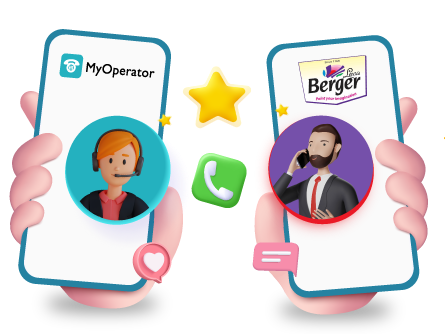
How Berger Paints Streamlined their On Call Voting Process with MyOperator Virtual Numbers and IVR
About Berger Paints
Berger Paints is one of the leading paint manufacturers in India. Besides offering high-quality products, they are also well-known for the “Berger Priyo Pujo,” which is held every Durga Puja since 2013.
Each citizen is given the opportunity to vote for their favorite Pujo or Pandal in this unique competition that spotlights the “Para Pujos” of Kolkata.
Problem Statement:
Because voters from every part of the city called to cast their votes, the call volume is extremely high and cannot be handled manually. The contest voting and registration process uses calls, the website, and a mobile app.
Berger had a difficult job keeping the voting process organized. Therefore, a call management solution that could guarantee automation and ease in their on-call voting process was required.
- Challenges faced by Berger Paints:
- Manually attending each call and taking note of their vote.
- Promoting different contact numbers for voting and registrations often confused the voters.
The MyOperator Solution
Berger Paints found its solution with MyOperator. They were provided with a virtual phone number that was used for both registration and voting. An IVR was deployed for automatic interaction with the callers.
Each Pandal was assigned a unique short code (extension code), which callers pressed in the telephonic menu to give their vote.Besides, their call management solution was integrated with Zapier.
Key Results:
- All the call-related activities including caller details, call timings, and votes automatically sync with the google sheet.
- Seamless on-call voting process, eliminating the manual intervention to manage the high volume of calls and votes.
MyOperator’s hybrid (Inbound+Outbound) solution transforms customer support with features like 24*7 assistance, real-time call tracking, ai-powered analytics, on-the-go management, and performance insights.
From tailored inbound support to proactive outbound engagement, every aspect caters to superior customer satisfaction. With MyOperator, businesses not only meet but exceed customer expectations, ensuring continuous success.


